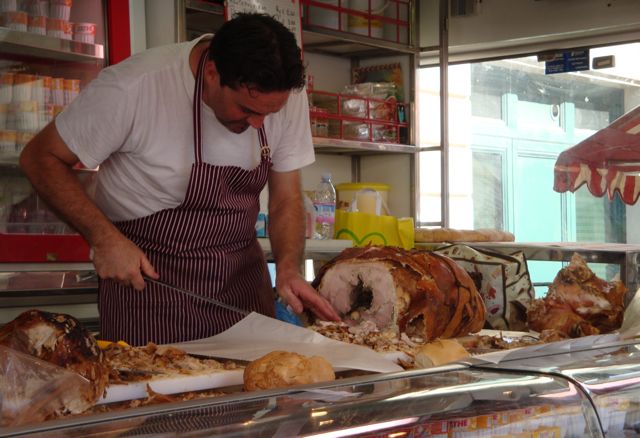Most foreigner visitors think of Italy through the eyes of the Renaissance or even the Dolce Vita, Italians instead, surprisingly have a much stronger fascination with the Middle Ages. Far from being the dark age, here it is often seen as a kind of return to an age of innocence between the collapse of the Classical Age and the grandeur of the Renaissance. Mediaeval People had a simple life, they were rural more than urban. The cities were small and surrounded by well tendered countryside. This has been witnessed by hundreds of artists, who produced paintings, frescoes and illuminated books. Scenes of ordinary life can be found carved on dozens of churches and cathedrals.
Nowadays, after a millennia, most cities, towns, villages, or even hamlets have at least one mediaeval fair or festival a year. Lucca has more then one but the mother of all the festivals happens in September when dozens of events revolve around the Celebrations of the Volto Santo (a mysterious wooden statue of Christ) on the 13th of September with a rather evocative procession lit by thousands of candles. The weekend before the parade there had been a 3 day fair, where hundreds of people were involved in a re-evocation of mediaeval life just below the walls of Lucca.
The day after the big procession there is a market fair in Borgo Giannotti the old Jewish quarter just outside the walls. They sell anything and everything but I was obviously interested in the food stalls. This market takes place 4 times in September. It is advertised as a maxi market and is terribly crowded. I went on the 14th and had to navigate through several streams of people. I wanted to take a lot of pictures. On the edge of the market there were a couple of stalls selling Brigidini di Lamporecchio, thin, crispy wafers flavoured with aniseed and made on the spot in most Tuscan fairs.
Borgo Giannotti in normal everyday life has got a lot of very interesting stores. Food is well represented and there are great shops selling kitchenware, glasses in any canonical shape, baskets, pottery, bottles, knifes and any kind of equipment for grape harvesting, mushroom or olive picking. I might need more than one post in the future to cover the treasures of this area.
For market day most shops had stalls on their doorstep but as it was a market and not a food fair there was sadly no tasting.
Not only Tuscan food was represented on the stalls, there were also delicious olives and sottolio (vegetables preserved in oil) from Calabria and Marzipan from Sicily.
Lucca was largely represented by earthy ingredients. Cured pork first of all, but also porcini mushrooms, roots, vegetables and fresh pulses, but I was mostly intrigued by the salacchini, little dry fish that one day I’m going to buy and test.
I got to the end of the main street and was about to turn back to explore all the side streets but a surprise was lurking. There was some movement near the old cattle market and I decided to investigate. To my astonishment I found that there was a large livestock section. There were horses, cows, calves, ponies and even pigs.
All the animals looked quiet and peaceful and were seemingly enjoying the warm sunny day.
I returned to the market to explore all the side streets. I found the most beautiful rustic pancetta (cured bacon) that resembled hanging torpedoes.
There were Porchetta vans so I couldn’t resist and bought a large sandwich.
There were also lots of kitchenware stalls, one of them selling pots made in pietra ollare (soaprock).
The stalls finished in Luna Park, the September fun fair. The area was already getting busy and the rides starting up with their first punters.
I have now marked out the best stalls and next market day I’ll bring a couple of bags to fill.























